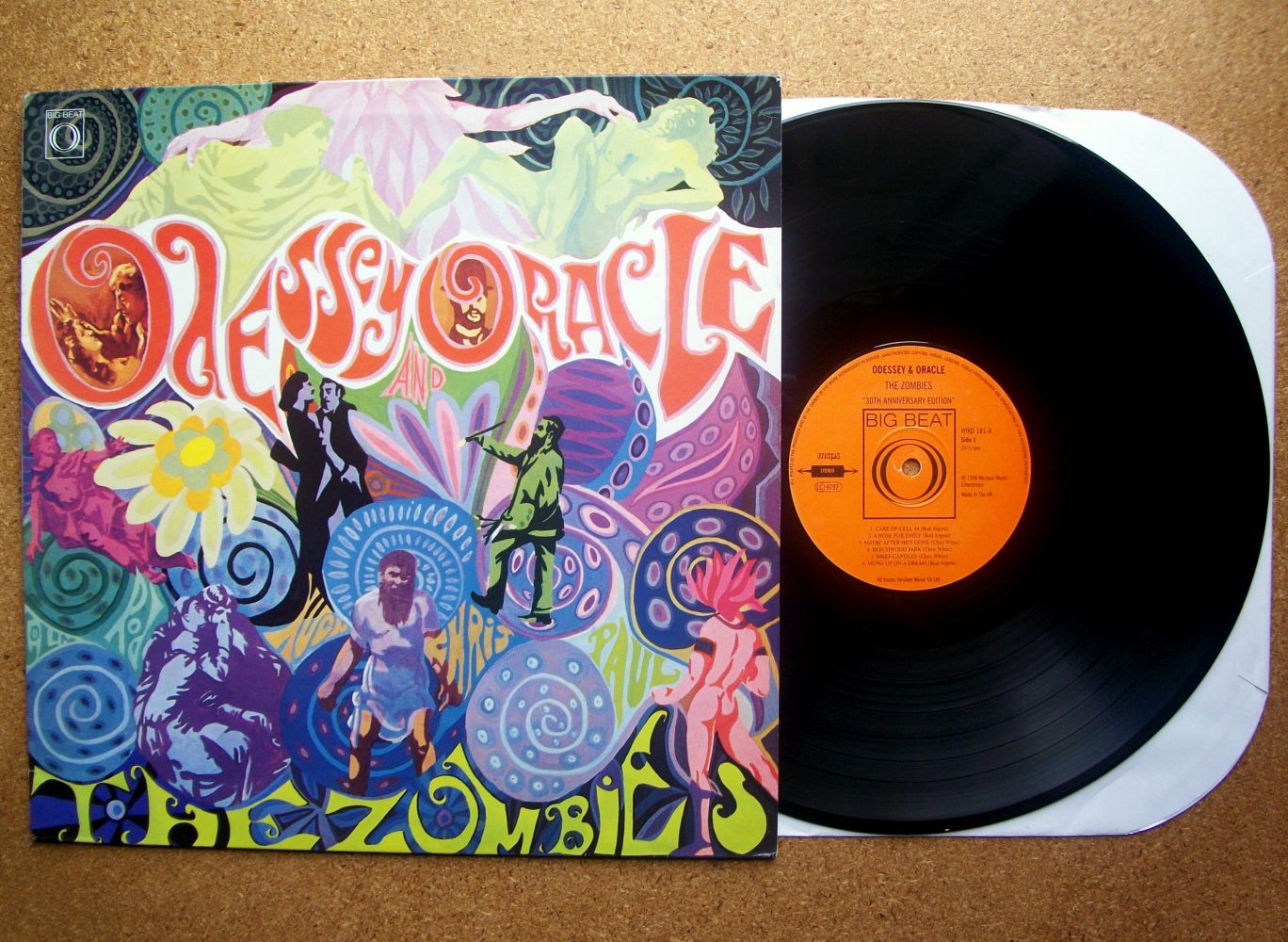Odessey and Oracle album cover. Courtesy of thezombiesmusic.com/discography.
Formed all the way back in 1958 in St. Albans, England, The Zombies had come just in time to capitalize on the sudden boom of British rock and roll bands who took the world by storm during the 1960s so-called British Invasion. The band was formed by keyboardist Rod Argent, vocalist Colin Blunstone, guitarist Paul Atkinson, bassist Chris White and drummer Hugh Grundy.
On the back of the Argent-penned song “She’s Not There,” the band secured a recording deal with Decca Records, and later released the song as a single in 1964. The hit charted on both sides of the Atlantic and instantly landed the band in the hearts and minds of screaming young girls everywhere. Aside from their follow-up single, 1965’s “Tell Her No,” which was also written by Argent, the band seemed unable to sustain the popularity and chart success they had so quickly happened upon. By late 1967 the band had called it quits.
However, before The Zombies were laid to rest, the band convened at the legendary Abbey Road studios in the summer of 1967 to record what would become the original group’s swan song album. It became the collection of utterly original, immaculately arranged and performed Baroque-psychedelic-pop song known as “Odessey and Oracle.”
For whatever reason, “Odessey and Oracle,” which was unintentionally misspelled on the psychedelic cover art, was completely passed over by rock music audiences in its day. With sales being so meager in Britain, Columbia Records was reluctant to even release the album in the United States where it eventually saw a similarly quiet release. Lost in the rapidly changing and expanding sea of popular music which was seen in the late 1960s, the album was simply passed over by the same audiences who launched albums like The Beatles’ “Sgt. Pepper’s Lonely Hearts Club Band” and Jimi Hendrix’s debut, “Are You Experienced?” into legend that very year.
Time has been much kinder to the LP and retrospective music critics have since recognized its status as one of the single greatest rock albums of all time, with Rolling Stone placing it at 100 on their list of the 500 greatest albums ever recorded. Even casual listeners who have never heard of The Zombies are likely have sung along once or twice to “Time of the Season,” the last track of the album which was released as a single two years after the band had broken up in 1969 and rightfully became a hit around the world. Since the sudden success of that song, those who have traced it back to its source were lucky enough to discover the melodious, mellotron-soaked album that precedes it.
In contrast to the band’s debut album, 1965’s “Begin Here,” “Odessey and Oracle” was composed entirely of original songs composed by the group’s songwriters, Argent and White, who proved themselves among some of the best and most inventive pop-song craftsmen of the era, even alongside Lennon-McCartney, Pete Townshend and Paul Simon. “Begin Here” was the kind of rush-job patchwork of a few original singles and a bunch of R&B covers that not even The Beatles were above releasing in the early 1960s.
From the expectant joy of Argent’s jaunty piano opener “Care of Cell 44” to the psyched-out guitar reverb of White’s “Beechwood Park,” the album hits an astonishing range of emotional peaks and valleys. It incorporates themes like mythology, changing seasons, the complexities of relationships, and even allusions to Shakespeare, which had scarcely been touched upon by pop music until then. The Zombies manage to pack all of this into 12 concise, infectiously melodic, and immaculately performed songs, not one of which exceeds five minutes in length.
Every last song is a pop single in its own right, and the album rolls along flawlessly, bending around inventive melodies and harmonies which rival those of The Beach Boys and Simon and Garfunkel. It benefits greatly from the fact that all five members of The Zombies were wonderful singers and hardly a single note seems misplaced.
So next time you hear the groovy bass line and breathy vocals of “Time of the Season” playing at a barbecue, just know that there is definitely more where that came from. For those brave enough to drop the needle on this piece of lost history, a forgotten masterpiece lies between the grooves waiting to be rediscovered by new generations.




